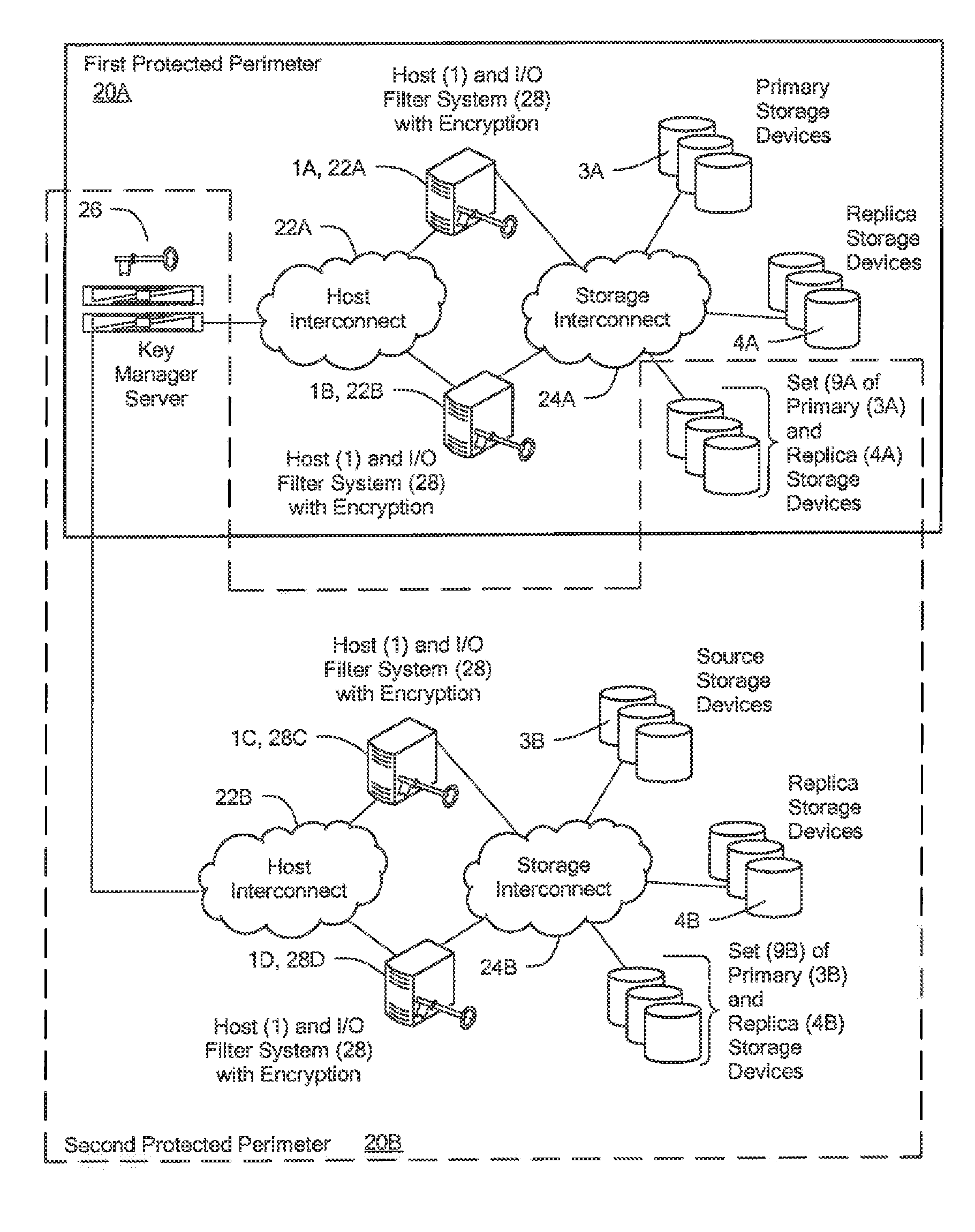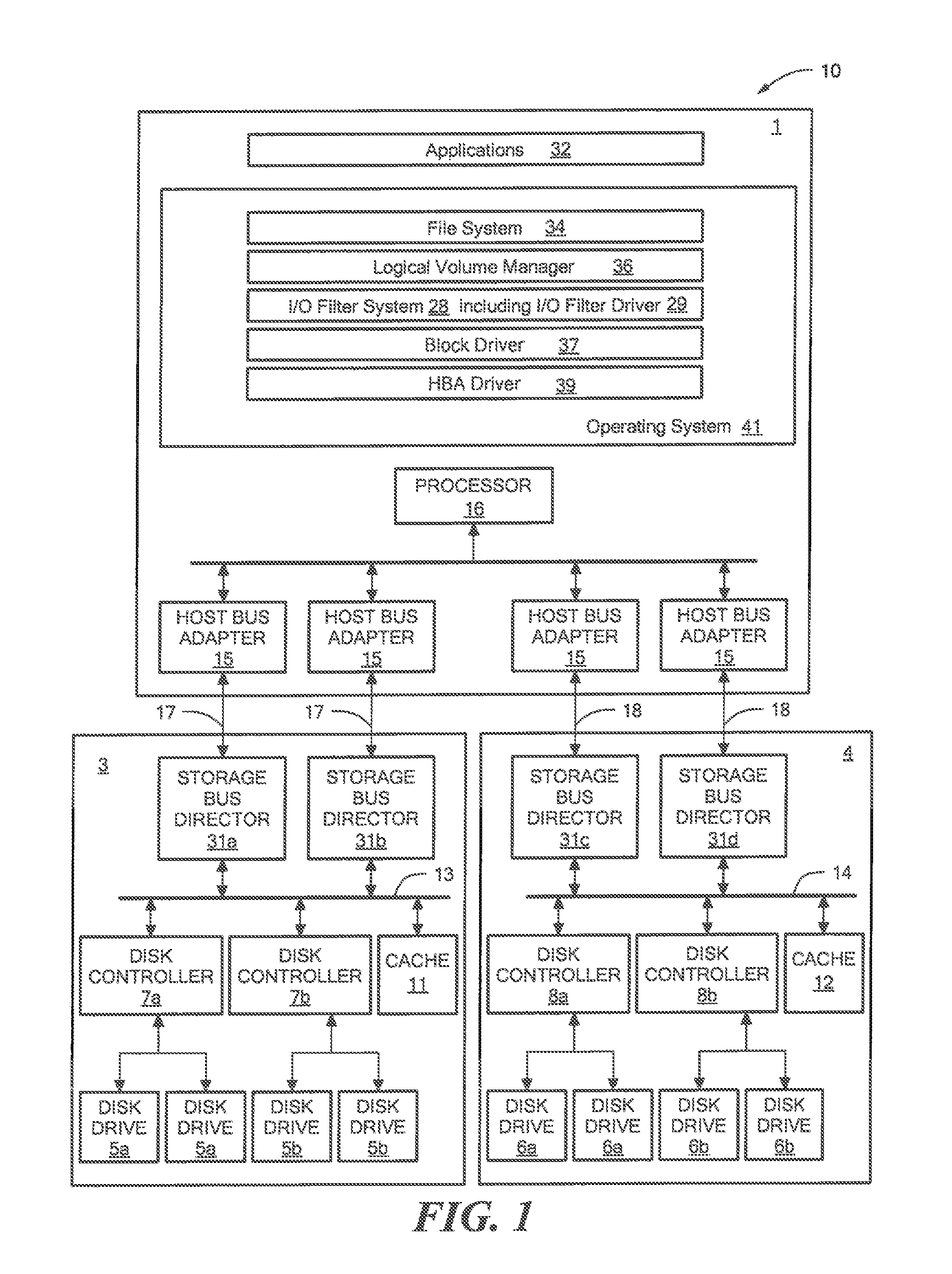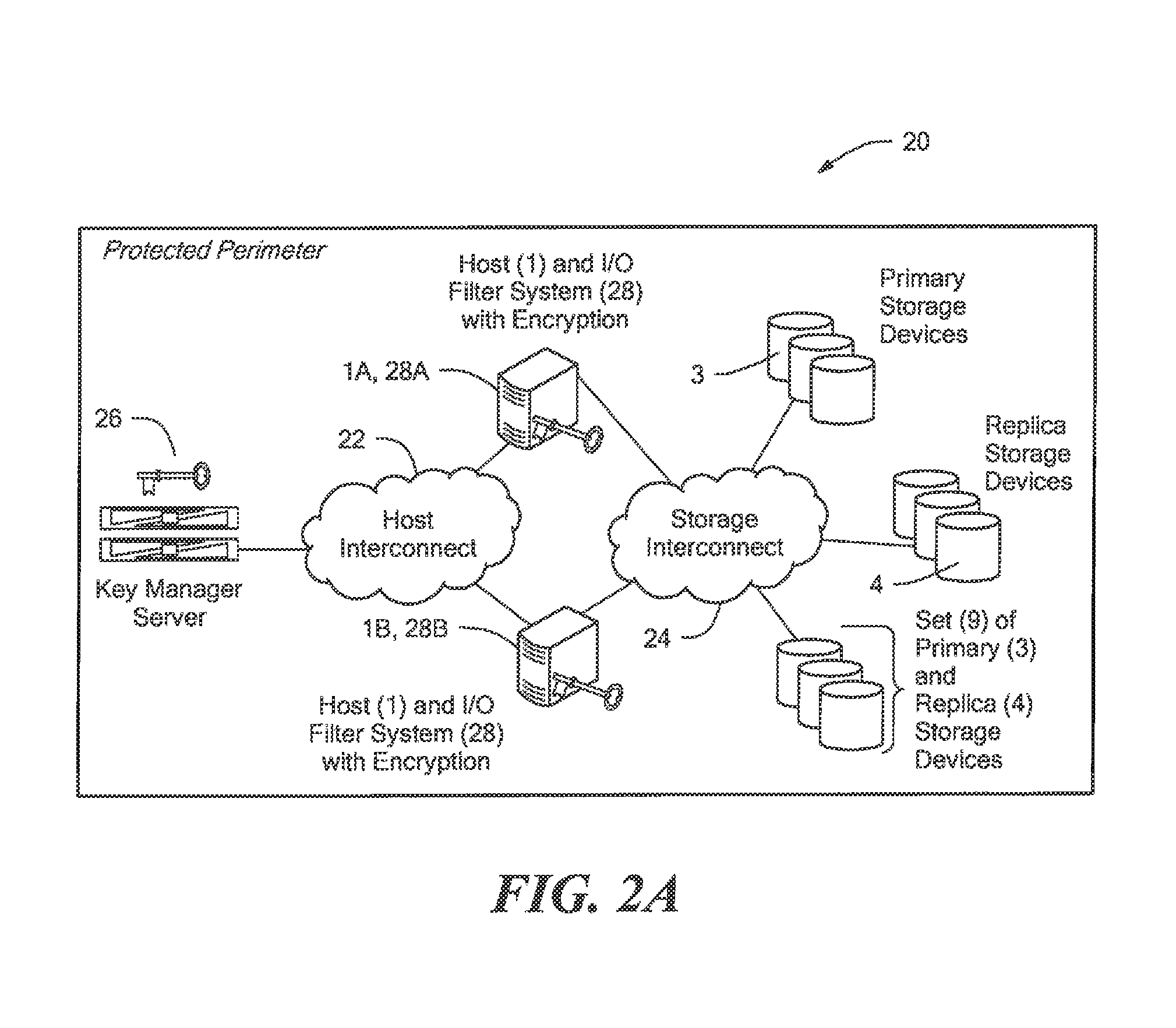Systems and methods for accessing storage or network based replicas of encryped volumes with no additional key management
a technology of network-based replicas and storage, applied in the field of systems and methods for accessing storage or network-based replicas of encryped volumes with no additional key management, can solve problems such as the need for modification of applications, single breach of data at rest can compromise many millions of records, and th
- Summary
- Abstract
- Description
- Claims
- Application Information
AI Technical Summary
Benefits of technology
Problems solved by technology
Method used
Image
Examples
Embodiment Construction
[0062]Before discussing the details of the invention, a preliminary discussion is provided giving an overview of the type of computing environment in which at least some embodiments of the invention are realized, followed by a brief overview of operation of one embodiment of the invention. The methods and apparatus of at least some embodiments of the invention may take the form, at least partially, of program code (i.e., instructions) embodied in tangible media, such as floppy diskettes, CD-ROMs, hard drives, universal serial bus (USB) memory devices, memory cards, random access or read only-memory, or any other machine-readable storage medium, including a transmission medium. When the program code is loaded into and executed by a machine, such as a computer, the machine becomes an apparatus for practicing the invention. The methods and apparatus of the invention also may be embodied in the form of program code that is transmitted over some transmission medium, such as over electric...
PUM
 Login to View More
Login to View More Abstract
Description
Claims
Application Information
 Login to View More
Login to View More - R&D
- Intellectual Property
- Life Sciences
- Materials
- Tech Scout
- Unparalleled Data Quality
- Higher Quality Content
- 60% Fewer Hallucinations
Browse by: Latest US Patents, China's latest patents, Technical Efficacy Thesaurus, Application Domain, Technology Topic, Popular Technical Reports.
© 2025 PatSnap. All rights reserved.Legal|Privacy policy|Modern Slavery Act Transparency Statement|Sitemap|About US| Contact US: help@patsnap.com



